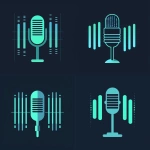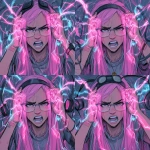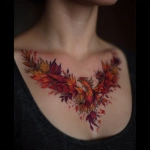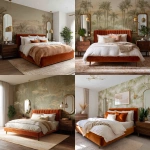Explore the Best AI Image Gallery

Bridging the Gap: How Wearable Tech is Empowering Creative Expression
The intersection of technology and creativity has always been a fertile ground for innovation. In recent years, wearable technology has emerged as a powerful catalyst, bridging the gap between imagination and execution in unprecedented ways. From artists utilizing haptic feedback to sculpt digital landscapes to musicians composing melodies triggered by body movements, wearables are democratizing creative tools and empowering individuals to express themselves like never before.
Wearable Tech: A New Creative Canvas
Wearables offer a unique advantage over traditional tools – they become an extension of the artist, responding to their physical presence and intentions. This direct interaction fosters a more intuitive and immersive creative experience. Consider these examples:
- Interactive Installations: Imagine walking through an art installation where your movements trigger soundscapes, light patterns, or even changes in the physical environment. Wearable sensors can detect your presence, speed, and direction, translating these inputs into dynamic artistic expressions.
- Gesture-Based Design: Architects and designers can utilize wearables to conceptualize and manipulate 3D models in real time. By wearing haptic gloves or controllers, they can sculpt virtual objects with their hands, experiencing the design process as a physical interaction.
- Augmented Reality Performances: Performers can incorporate augmented reality elements into their shows by wearing headsets that overlay digital visuals onto the stage. This creates a mesmerizing blend of real and virtual worlds, enhancing the storytelling and audience engagement.
Beyond Art: Wearables Across Creative Industries
The impact of wearable technology extends far beyond the visual arts. It is transforming creative processes in various industries:
- Music Production: Musicians can experiment with new sounds and rhythms by wearing devices that translate their body movements into musical notes or effects. This opens up a world of intuitive composition and performance.
- Fashion Design: Wearables are integrated into fashion shows, allowing designers to showcase interactive garments that respond to the wearers movements or environment. The audience can experience the clothing as a dynamic, evolving piece of art.
- Filmmaking and Storytelling: Directors can utilize wearables to capture immersive footage from different perspectives, blending reality with virtual elements. This creates new possibilities for storytelling and visual experiences.
Navigating the Ethical Landscape
As with any powerful technology, wearable tech raises ethical considerations that require careful attention:
- Privacy Concerns: Wearables collect vast amounts of data about their users. It is crucial to establish clear guidelines and safeguards to protect user privacy and ensure responsible data handling.
- Accessibility and Inclusivity: Creative tools powered by wearables should be accessible to individuals with diverse abilities and backgrounds. Designers need to consider the needs of all users and strive for inclusivity.
- Bias and Representation: Algorithms used in wearable tech can perpetuate existing biases if not carefully designed. It is essential to promote diversity and representation in the development process to ensure fair and equitable outcomes.
Future Trends: A Glimpse into the Horizon
The evolution of wearable technology is accelerating, with exciting advancements on the horizon:
- Brain-Computer Interfaces: Imagine controlling digital creations with your thoughts. Brain-computer interfaces have the potential to revolutionize creative expression by bridging the gap between mind and machine.
- Enhanced Sensory Experiences: Wearables can augment our senses, allowing us to perceive sounds, textures, and colors in new and immersive ways. This can unlock fresh creative possibilities for artists and designers.
- Personalized Creativity: AI-powered wearables will adapt to individual user preferences and styles, offering personalized creative tools and experiences tailored to their needs.
Conclusion: A Collaborative Future
Wearable technology is not merely a tool for creation; it is a catalyst for collaboration. It empowers individuals to share their ideas, collaborate on projects in real time, and connect with audiences in unprecedented ways. As we venture further into this exciting realm, the future of creativity lies at the intersection of human imagination and technological innovation.

](https://images.ai-img.art/thumbnails/150/469bffae134ea97666025052588e76bb4dd4b6b98c4888cfd7873929a73156ff.webp)
](https://images.ai-img.art/thumbnails/150/4c5bdb0a0a1f761a911521333b9e3463c885aa247b42d1d311a97f2aa2c513d2.webp)

](https://images.ai-img.art/thumbnails/150/4c67c727683a835917441757b71ace563950f9178fa4826e09a55cfb092ac715.webp)









](https://images.ai-img.art/thumbnails/150/b94716d4b88da3e1ec3ab12162616a52ff5698251ac791ddf8478649889a0f47.webp)



















](https://images.ai-img.art/thumbnails/150/fe996254fcb758c1365f3a22783ee6112ed5e34579deb401de674b06938efb2a.webp)
](https://images.ai-img.art/thumbnails/150/985b7bf314caa205e59a2c973e979ce77cf5b24ca39799fffe2e30ea7c79ef07.webp)




